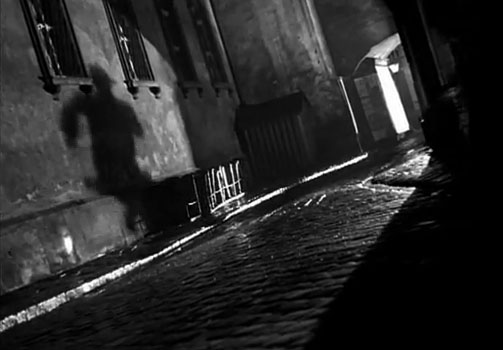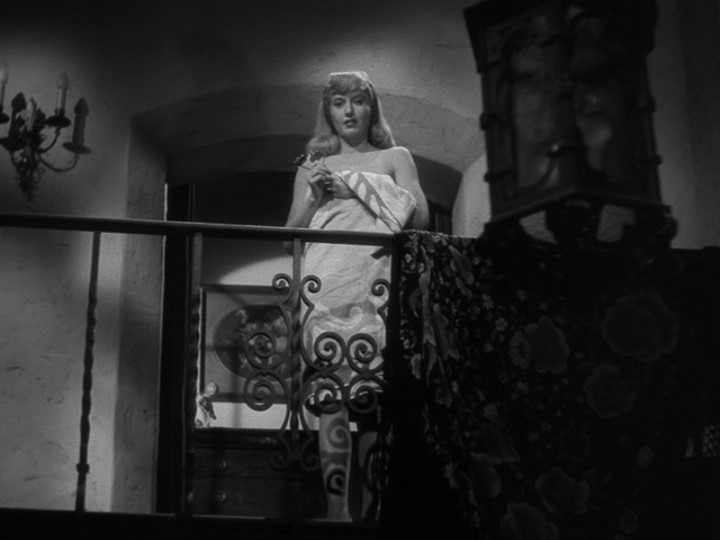A key feature of Film Noir, that makes the style so defined, is the subject matter. Noir films often focus around themes of greed, crime and extortion, our main character will almost always be enigmatic and have an untold side to them. This untold side in the lead roles often gives a sense of moral ambiguity. The stories often revolve around gangsters, cops, detectives and perhaps a love interest or femme fatale. There is often a metaphorical meaning behind characters, where they are and how the film is edited.
 Lighting in noir films is crucial in its iconic look. Every scene is lit with an intention to suggest something. Shadows are often used to create enigma around a character or to suggest they have another, darker side to them we do not know about. For example, this still from double indemnity on the right is a prime example of this. The sharp shadow looks almost as if there are two of the character, a light/ good one and a dark, silhouetted one with something to hide. The lighting in noir a scene, almost always single point lighting or backlit, is very un-natural and artificial which can really keep an audience on edge, never being able to settle into some gentle visuals. It can also be used to drag the audiences eye to where their focus is needed, such as again in the same still from double indemnity, the edges are darkened focusing our attention on the character and making us feel we have no other place to go.
Lighting in noir films is crucial in its iconic look. Every scene is lit with an intention to suggest something. Shadows are often used to create enigma around a character or to suggest they have another, darker side to them we do not know about. For example, this still from double indemnity on the right is a prime example of this. The sharp shadow looks almost as if there are two of the character, a light/ good one and a dark, silhouetted one with something to hide. The lighting in noir a scene, almost always single point lighting or backlit, is very un-natural and artificial which can really keep an audience on edge, never being able to settle into some gentle visuals. It can also be used to drag the audiences eye to where their focus is needed, such as again in the same still from double indemnity, the edges are darkened focusing our attention on the character and making us feel we have no other place to go.
The use of the camera is another recognisable trait of film noir. The way the camera is manipulated in noir films can create a disorienting experience for the viewer. For example, using a canted angle gives the impression that events have taken a turn for the worse and makes the audience feel a certain unease and desperation. Moving shots can have a similar result to this. In many noir films, the camera is constantly moving slightly from one place to another, demonstrating a lack of stability. There are a lot of extreme angles used in noir. These angles can suggest status, make us feel disconnected from characters or can foreshadow an area of interest by being low to the ground and looking up at a high building. Techniques are continued to be used when filming characters. In noir, shots of people are primarily tight, claustrophobic close ups or wide and empty long shots. This either makes us feel up close to the character as if they have no place to go or disconnected from them exaggerating how alone they are.
A common feature in noir films is an obstruction between the audience and a character. A reoccuring example of this is bannisters. UNFINISHED



No comments:
Post a Comment